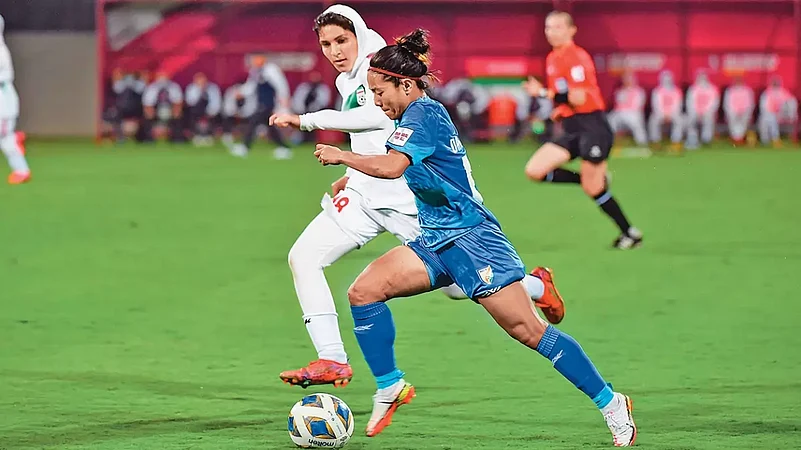Boyish
When I was a kid, I had short hair. I used to roam around like the boys of my village. It helped me get a foot in the door of the sport. Had I had long hair and a feminine persona, I would not have been encouraged to take up football full-time.
My short hair and boyish nature have helped me in sports. I was almost unrecognisable as a girl. I would use that to my advantage and roam around freely, unlike other girls in my village. So, yes, I became the first girl to play football from my village in Churachandpur when a friend asked me if I would like to take part in a grassroots-level tournament during the annual Jesuit Sports Day. This was in 2008, when I was in school. Maybe I played well because ,after the tournament, the coach asked me if I would like to learn the sport and practice in the football ground which was two km away from my school. I agreed. Every day, after school got over at 3 pm, I would run the two km or ride a bicycle to practice with a team of boys and a few girls.
Joining a Team
In 2009, I got selected to the U-14 Indian Girls Football team. But it was after I got selected in the senior team, in 2013, that I became more serious about pursuing football as a profession. There, I met Sasmita Mallik, Bala Devi and other senior players and started to believe that I should prioritise the sport more than anything else.

In my state of Manipur, more and more girls have become interested in playing football these days. But the problem is that most of the coaching centres are in Imphal, far away from the hills. For those of us who belong to the hilly areas—which is 90 percent of Manipur—it becomes very difficult to come down to the plains. I used to travel for one-and-a half hours to reach the coaching facility from Bishnupur where I stayed. So, even if girls are interested in football, it is a struggle to practise at the coaching facilities at 7.30 in the morning.
Obstacle Race
Many girls and their parents approach me to guide their children so that they can play the sport as well. But, given the condition of football infrastructure in the state, I feel really sorry for them. Most coaching centres do not have basic facilities for women players. We need to go to people’s houses in order to use toilets. During menstruation, it becomes difficult for us. Most of the existing toilets are not women-friendly.
It is difficult for female players to sustain in this field as they do not get financial support on par with male players. People do not want to sponsor female sportspersons. There are fewer supporters and fans of women’s football. Many women’s league tournaments are not even broadcast on television.
Go girls!
However, things are changing with time and the field has become a little more conducive for women sportspersons in the past few years. Six years ago, the Indian Women’s League was launched. It is a huge morale boost for female players who are finally able to get some financial support, unlike a few years ago. Otherwise, in a highly physical sport like football, where many women players cannot afford basic amenities, being able to afford nutrition is nearly impossible.
The more professional women’s football becomes, the more female players would shine at the international level. I, as a player, would like to appeal to associations to come out in support of female players, ensure good coaching facilities and end disparity in salaries and prize money.
Dangmei Grace is an Indian footballer from Manipur who plays for the women’s national team and as a forward for the Uzbek FC Sevinch NASAF
















